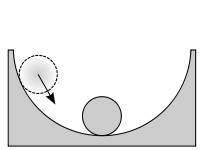More Experimenting
Yesterday, I described a simple way to hear, and more importantly, feel, the difference between equal temperament and just intonation, by singing Frère Jacques over an open G chord with ET major thirds, and then over a G chord that has only roots and fifths in it.
The second half of the experiment is called singing over a drone, and it’s a great way to get acquainted with the resonance of the pure notes. The 1–5 drone is a bedrock foundation of North Indian (Hindustani) classical music. Check out this gorgeous song with Ravi Shankar’s two daughters, Norah Jones and Anoushka Shankar. It’s not drone music, but it’s a beautiful blend of East and West, and I feel the purity of the notes down to my bones. This is untempered music.
At this point I must pause again to acknowledge my enormous debt to W.A. Mathieu. I had been studying just intonation for several months when my friend Kay Ashley, a fine singer, guitarist and student of Hindustani music, loaned me her copy of Mathieu’s book Harmonic Experience. She did not get it back until I had my own copy.
The first part of the book introduces the pure notes by showing the reader how to sing them over a drone. I have found no better way to understand the notes of just intonation than to sing them. It isn’t just about hearing them, even though that can be beautiful and illuminating. It is about feeling the resonance in your body.

My own experience in singing over a drone of a root and perfect fifth is that it is much easier to sing in tune. It’s as though the drone sets up a sort of sonic field that has grooves or troughs in it, points of stable equilibrium into which my voice falls, and wants to stay.
The equal-tempered chord is not so friendly. The tempered major third is not in tune, that is, its natural resonance does not point exactly to the tonic. It’s as though it points to a different tonic, a little sharper than the one the root and fifth are pointing to. The groove is obscured, and there is a fight between the two worlds that makes it harder to know exactly what to sing. The reference is shaky.
I confess, yesterday’s experiment was a little unfair to equal temperament. I changed two things at once, which is not a good way to investigate nature. It’s much better to change only one thing at a time, so you know what causes what. When you sing over the straight G–D drone, you’re hearing two changes — the simpler chord (1–5 instead of 1–3–5), and the effect of removing the equal tempered third.
In the interest of scientific honesty, here’s one more exercise that shows only the effect of ET.
I’ve recorded some synthesized strings to sing along with. These are the same notes as the open G chord: G-B-D-G-B-G. Once again, sing Frère Jacques. Row, Row, Row Your Boat and Three Blind Mice are also excellent, I recommend trying them too.
Here is a G major chord in just intonation:
And in equal temperament.
If this is not in your most comfortable vocal range, here are some six-note chords in the key of C. I find these better for my own voice. These are note-for-note the same as the first position C chord on guitar, another common chord with two equal tempered thirds in it.
C major in just intonation:
And in ET.
I invite you to go back and forth between the JI and ET versions of the chord that is most comfortable for you, singing over each.
While you’re singing, pay attention to how the notes feel, in your body.
Also notice how easy, or how difficult, it is to hold your notes, to jump straight to the next note, to not waver when you hold a long one.
And perhaps most importantly, pay close attention to the emotion you feel while singing.
I have long experienced flashes of musical ecstasy — it’s why I make music, to experience and share that transcendence. But such experiences have been sporadic, and somewhat mysterious. Encountering, studying and internalizing the pure notes, and their relationships to each other (the lattice), has thrown open the double doors, and I am now in the long process of walking through them.
Next: Entrainment
I’ve been reading through your blog article-by-article for the last week or so (also bought Harmonic Experience for my next read). What an enlightening journey you’re taking us on!
Yesterday, singing over the G and G5 chords on my guitar, I wasn’t feeling the difference. Today, over the drones, the difference was stunning! I’ll have to go back and try on guitar again after tuning more carefully. This experiment was truly eye-opening.
Thanks for bringing us along. I’d happily donate if you had a tip jar!
Thanks Eric! I’ll email you a PayPal address, and I’m glad you’re enjoying the journey! Gary
Gary
Gary, do you know of Lisa Hannigan? Among many luscious, gorgeous songs, there is a particular rendition of her song “Undertow” that transports me every time I listen to it. I suspect that a significant part of that experience is that she is generally singing to a R-5 drone, so that her voice is able to hit the justly intoned thirds. I also wonder if she’s hitting some septimal notes sometimes. I’d love to hear your thoughts on it, and I bet you’ll adore the song as well. Even just watching the video is a pure pleasure, just to see the love of music and the resonance between Lisa and her co-singer Loah.
https://youtu.be/UwaBoX97PbQ